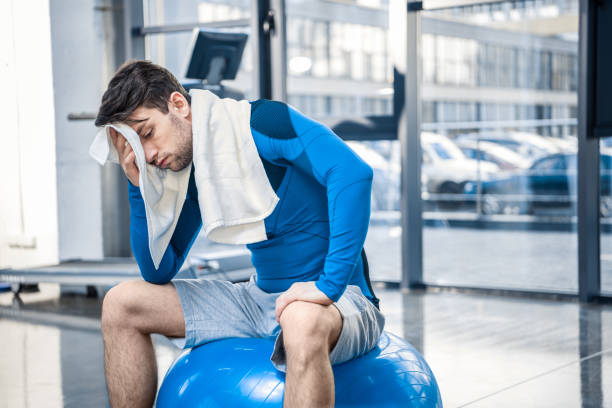Exercise is a vital component of a healthy lifestyle, but for some individuals, it can come with an unexpected side effect – nausea. While this sensation can be unsettling, it is essential to understand that experiencing nausea after working out is usually not a cause for major concern. In this article, we will explore the various factors contributing to post-workout nausea and provide valuable insights on how to prevent and manage it effectively.
Common Factors Leading to Post-Workout Nausea
Nausea following a workout can be attributed to several factors, each of which plays a role in this discomfort:
1. Eating before Exercising
Consuming a large or heavy meal too close to your workout can lead to nausea. Your body diverts blood flow away from your digestive system to your muscles during exercise, which can hinder proper digestion.
2. Excessive Water Consumption
While staying hydrated is crucial, overindulging in water during your workout can dilute your blood’s electrolyte balance, causing nausea and dizziness.
3. Neglecting Warm-up Exercises
Skipping warm-up exercises can shock your body, causing sudden changes in blood flow and potentially leading to nausea.
4. Type of Exercise
The type of exercise you engage in can also influence post-workout nausea. High-intensity interval training (HIIT) and strenuous activities may trigger nausea in some individuals.
5. Exercising in a Hot Environment
Exercising in a hot and humid environment can lead to increased sweating and fluid loss, contributing to dehydration and nausea.
6. Overexertion
Pushing yourself too hard, especially if you are new to a workout routine, can overwhelm your body and result in post-exercise nausea.
Preventing Nausea After Working Out
If you frequently experience nausea during or after your workouts, consider implementing the following strategies to prevent this unpleasant sensation:
1. Gradual Adjustment
Allow your body time to adapt to a new workout routine. Gradually increase the intensity to avoid overexertion, especially if you are new to exercise.
2. Proper Nutrition
Consume a light meal 2-3 hours before working out. Opt for easily digestible foods to minimize the risk of nausea during your session.
3. Hydration Balance
Stay hydrated during your workout, but avoid excessive water consumption. Balance your fluid intake to prevent electrolyte imbalances.
4. Low Impact Workouts
If high-intensity workouts trigger nausea, consider switching to low-impact exercises such as swimming, cycling, or yoga.
5. Hot Environment Awareness
When exercising in a hot environment, take regular breaks to cool down and rehydrate to prevent overheating and nausea.
Managing Nausea During and After Exercise
While prevention is the best approach, sometimes nausea strikes despite your best efforts. In such cases, you can try these strategies to alleviate discomfort:
1. Carbohydrate-Containing Beverages
Consuming drinks with carbohydrates like glucose and fructose during or after your workout may help reduce post-exercise nausea, as suggested by a 2014 review.
2. Nitric Oxide Supplements
Nitric oxide supplements can potentially increase blood flow to the abdominal organs, reducing the likelihood of nausea.
3. Gentle Exercise
Taking a short walk or engaging in gentle, low-intensity exercise can improve blood circulation to the stomach, potentially alleviating post-workout nausea.
When to Seek Medical Advice
While post-workout nausea is typically harmless, there are situations in which seeking medical advice is advisable:
If you have implemented the prevention and management strategies mentioned above but continue to experience severe symptoms such as persistent nausea, vomiting, chest pain, or extreme dizziness, it is essential to consult a healthcare professional promptly. These symptoms may indicate underlying medical issues that require attention.
Conclusion
In conclusion, experiencing nausea after a workout is a common issue that can often be managed and prevented with the right strategies. By gradually adjusting to exercise, maintaining proper nutrition and hydration, and paying attention to your body’s signals, you can minimize the likelihood of post-workout nausea. However, if you experience severe or persistent symptoms, it is crucial to seek medical guidance to rule out any underlying health concerns. Remember that staying healthy and enjoying your exercise routine should always be your top priority.
Nausea after working out is further explained in this video:
